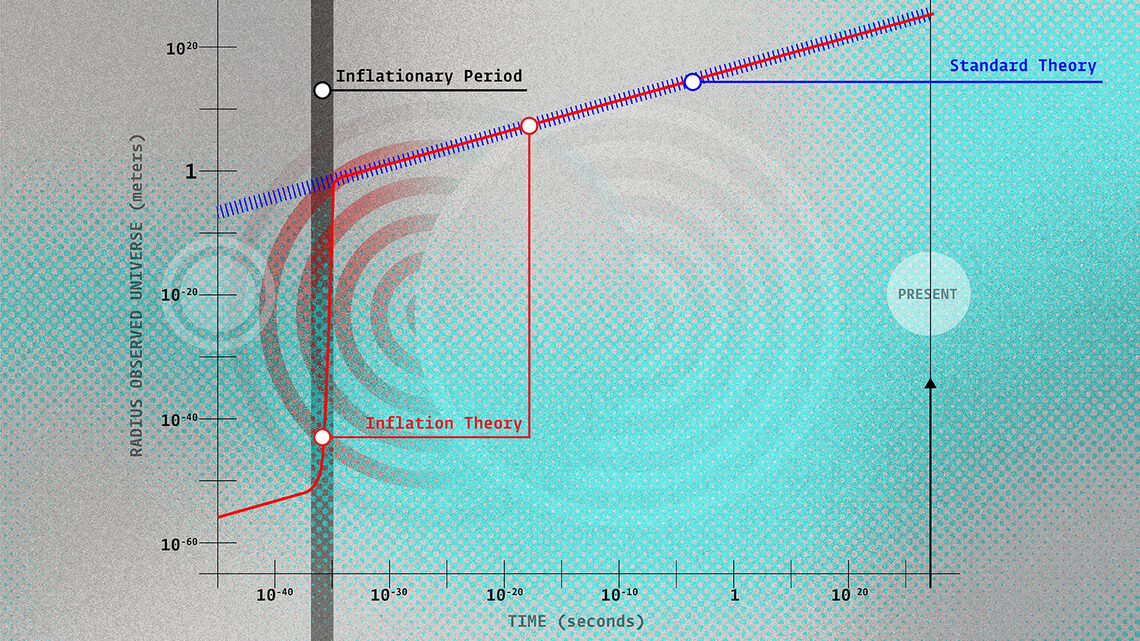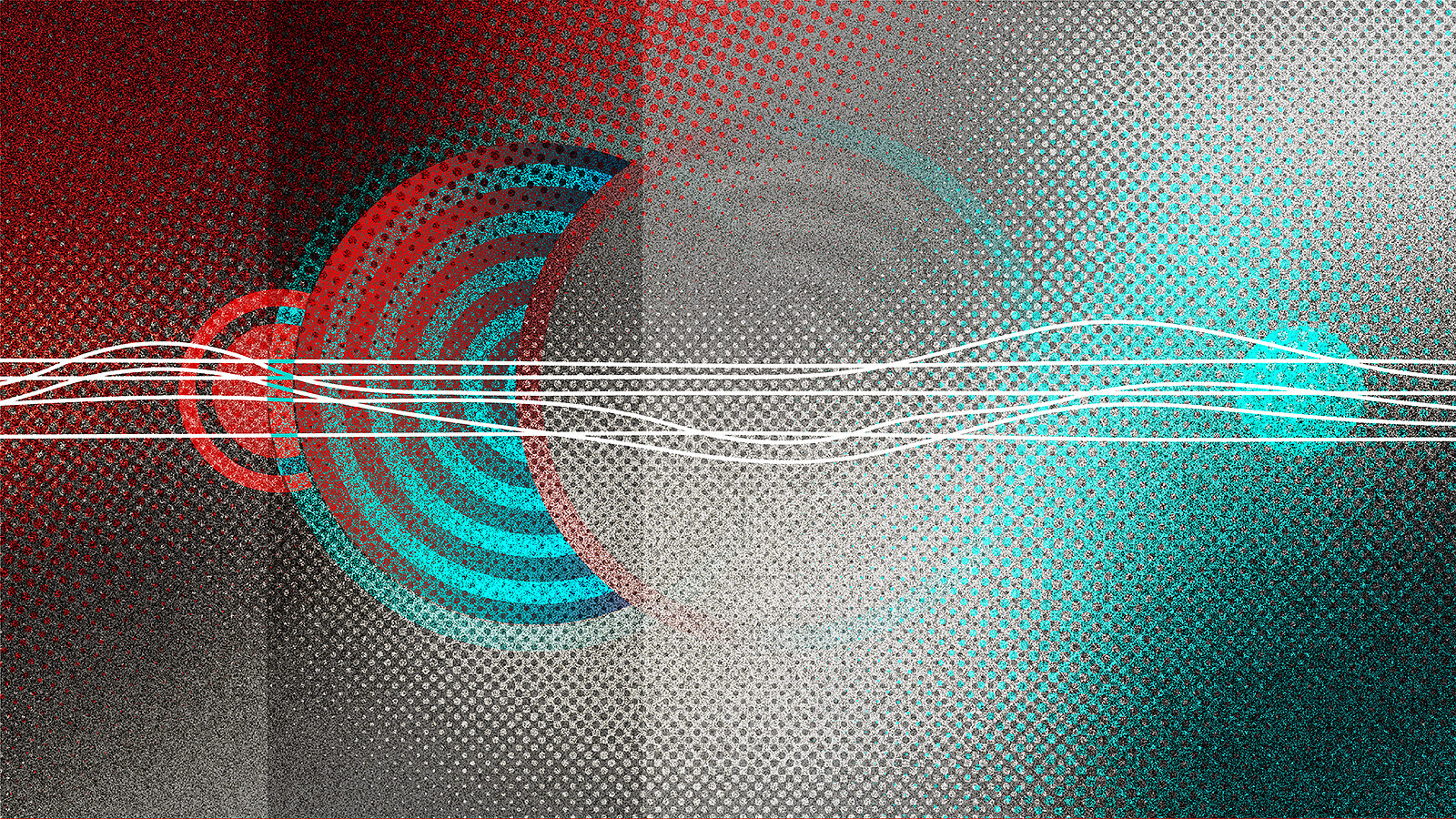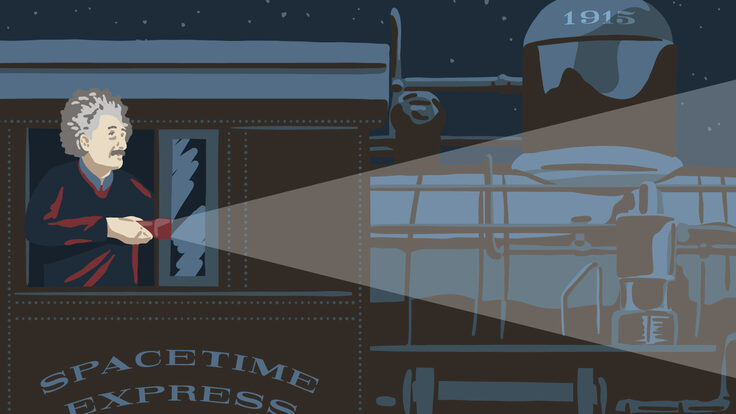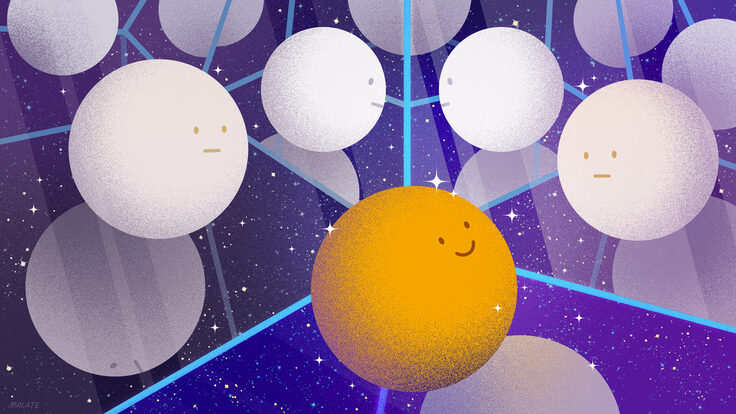For Alan Guth, insight into the origins of the universe started in a Cornell University lecture hall in the fall of 1978.
It was that semester that Guth, then a postdoc, attended a series of talks by astronomer and physicist Robert Dicke. In his lectures, Dicke introduced a critical cosmological question that was eating away at the theory of the Big Bang: the flatness problem.
The flatness problem asks why the universe looks the way it does. The density of matter and energy around just after the Big Bang should have determined the universe’s future shape, and the parameters that would produce a flat universe—as opposed to a curved one—were extremely narrow. And yet, as far as we can measure using several different methods, our universe is almost perfectly flat.
Just dialing the density slightly up or down, at very early times, would have resulted in a universe very strongly curved in one direction or another. Also, perhaps troublingly, either of these options could have precluded our existence.
In the first second after the Big Bang, if the universe had been less dense “by just one digit in the 14th decimal place,” Guth says, it would have been largely empty. This is because there would have been less mass to put the brakes on its expansion. On the other hand, a slightly denser universe would have expanded too slowly, leading it to collapse on itself in a “Big Crunch.”

This kind of precise fine-tuning seemed peculiar, Guth says. Nevertheless, he initially brushed the problem aside to pursue work on a different one: magnetic monopoles.
Popular theories posited that the early universe should have produced an enormous number of heavy particles, including magnetic monopoles. Unlike the dipole magnets we know today—which have “north” and “south” charges on opposite ends—a monopole can have just one, either a “north” or a “south” charge, but not both.
These distinctive particles should have both proliferated and stuck around; we should still be able to find them today. But physicists have yet to encounter even one. Guth, along with then fellow Cornell postdoc Henry Tye, explored why this might be.
Tye and Guth thought extreme supercooling could explain the universe’s apparent lack of magnetic monopoles. As Guth explains, the monopoles would have formed when twists in a chaotic quantum field became frozen at a phase transition. However, if the phase transition were delayed by extreme supercooling, the twists could have smoothed out before they were frozen, resulting in the absence of monopoles.
It was only when rushing toward a deadline on the project, more than a year later, that Guth says he suddenly saw a crucial connection between this idea and the flatness problem.
“Henry was preparing to leave for a six-week trip to China, so we were hurrying to finish the paper before he left,” says Guth, who by then had moved on to a postdoc at the US Department of Energy’s SLAC National Accelerator Laboratory (then called the Stanford Linear Accelerator Center). “But before he left an important thing happened, which is that he said we should look at what effect the extreme supercooling would have on the expansion rate in the universe.
“So I went home one night at the beginning of December to work out the equations that describe how the expansion rate in the universe would be affected by the supercooling of the matter,” Guth says. “And it was immediately obvious that it would affect the expansion of the universe tremendously. It would drive the universe into a period of exponential expansion, which is what we now call inflation. And the same night that I realized that this exponential expansion would also give a solution to the flatness problem.”
According to the theory of inflation, the expansion rate of the universe exploded in its earliest moments and then slowed. This happened as a quantum field called the inflaton field underwent a transition that pushed things apart before settling into a phase of normal gravity. The first part, the rapid expansion, would have diluted any matter and energy already present when inflation started. The second part would have released a new batch.
Luckily for those of us who appreciate the universe as it is today, the energy released was just the right amount to drive the universe toward flatness, Guth says.
In addition to offering plausible solutions to the flatness and monopole problems, inflation also helped explain a third problem: the horizon problem.
The horizon problem comes from our observations of the cosmic microwave background, or CMB: the afterglow left by the early universe’s first freed particles of light, explains Nobuchika Okada, a professor of physics at the University of Alabama.
Essentially, scientists have observed that the CMB is very nearly the exact same temperature in all directions. This was considered strange because the parts of the universe at opposite edges of our “horizon”—as far as we can detect from our vantage point on Earth—were too many lightyears apart to ever have communicated with one another. They should not have been able to settle into an average, uniform temperature.
Inflation suggests that the entire visible universe once existed as a single, contained region before the inflaton field drove it into expansion. This shared proximity of origin would explain how now disparate parts of the universe could have once mingled, Okada says.
In January 1981, Guth published a paper titled “Inflationary universe: A possible solution to the horizon and flatness problems.” It has since been cited about 13,000 times. In 2002, Guth shared the Dirac Prize for the development of the concept of inflation with physicists Andrei Linde and Paul Steinhardt. In 2012, Guth and Linde received the Breakthrough Prize in Fundamental Physics for the innovation, and in 2014, they, along with Alexei Starobinsky, were awarded the Kavli Prize in Astrophysics. Guth is now the Victor F. Weisskopf Professor of Physics at MIT.
The theory of inflation has been widely celebrated, but a theory alone isn’t enough to close the case on the mystery of the early universe.
That’s where research like that of Eva Silverstein, a professor of theoretical physics at Stanford University, comes in. She works to come up with ways to test inflation theory. Silverstein uses ancient data sources—like the CMB—to try to uncover the mechanisms behind inflation. In particular, Silverstein’s work uncovers how the mechanisms of inflation may be consistent with the tenets of quantum gravity. This quantum gravity framework can help explain observational data of inflation’s energy plateau, she says.
The CMB is of great interest to scientists investigating the theory of inflation. The rapid expansion should have produced gravitational waves, which would have left a unique pattern in the CMB called B-mode polarization. In 2014, the BICEP2 experiment announced that it had observed this pattern, but scientists later walked back their confidence in the result. Experiments are still searching for B-mode polarization in the CMB.
For his part, Okada looks for ways to discover the inflaton field at particle accelerators. Guth says he isn’t sure we’ll ever be able to find inflatons, which might have decayed entirely during inflation. But, Silverstein says, if peering back to the very moment of inflation does turn out to be forever off limits, that’s okay.
“There is a limit to the data and a causal limit to what we can see in the universe consistent with the finite speed of light,” Silverstein says. But “it is amazing how much we can see and deduce, so this remaining uncertainty is not the end of the world.”
In fact, it’s only just the beginning.













